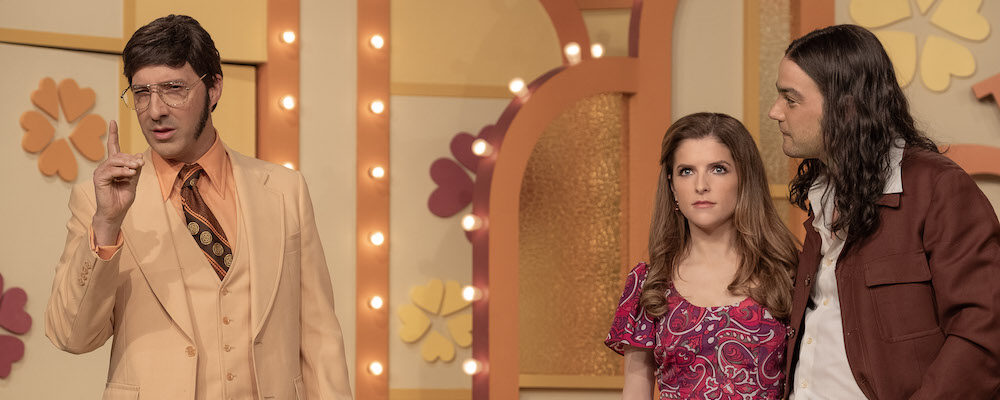‘Woman of the Hour’: Anna Kendrick’s Chilling Directorial Debut Focuses Its True Crime Story on the Victims
Sandra Miska
It is one of those pop culture stories that sounds like an urban legend – a woman goes on “The Dating Game” and selects a bachelor who is later outed as a serial killer. Afterwards, picking up on his creepy vibes, she opts out of going out on date with him, a decision that probably saved her life. Eerily enough, this actually happened in 1978, and for her directorial debut, Anna Kendrick sets out to uncover this unsettling story about a killer hiding in plain sight. In “Woman of the Hour,” Kendrick stars as Cheryl Bradshaw, the struggling actress whose agent books her on the dating show, unknowingly setting her up to be the potential latest victim of Rodney Alcala (Daniel Zovatto), a “successful photographer” who rapes and murders women on the side.
The opening scene goes from charming to eerie to terrifying in shockingly quick succession, for both the viewer and Rodney’s first onscreen victim, a young woman named Karen (Kelley Jakle). He photographs her in a picturesque but isolated location, making her feel at ease before he attacks her. We come to learn that this is the modus operandi of Rodney. Educated and intelligent, he earns women’s trust with his soft-spoken, flattering gentleman with a camera act, and by the time they see his mask slip, it is usually too late.
Next, we meet Cheryl, a graduate of Columbia’s theater program. She moved to Los Angeles to pursue an acting career, but so far has faced a string of soul-crushing auditions for obnoxious male producers and casting directors. Her agent convinces her to appear on “The Dating Game” for exposure, the 1978 version of going on “The Bachelor,” except there is no prospect of a social media influencer career. It’s a dizzying experience from the get-go, but Kendrick plays Cheryl with grace, poise and composure. She asks the bachelors hard questions, upsetting the smarmy, sexist host (Tony Hale), who tells her beforehand to go easy on them because “boys are babies.” She ends up selecting Rodney, Bachelor #3, in part because the other two options, a dummy and an egomaniacal horndog, are that horrible
One person in the studio who is not fooled by Rodney is Laura (a compelling Nicolette Robinson), a woman in the audience who recognizes him as the last man she saw her friend with before she was raped and murdered. Her impassioned attempts to report him are brushed off by multiple men, making this character a representative of the many real people whose concerns against Alcala were ignored throughout the years.
Cheryl’s 1978 storyline is interwoven with snapshots from Rodney’s criminal life. However, Kendrick is not interested in doing a deep psychological dive on him or showing any gore or drawn-out violence (he’s seen here through the eyes of his victims and potential victims, which is actually more interesting). Instead, the director effectively examines the misogynist culture that bred the likes of Alcala. Even the “nice guys” in the film have a chauvinistic streak. Cheryl’s only friend in Los Angeles is her friendly neighbor, Terry (Pete Holmes), who quickly transforms from a source of support to a dejected suitor. Even Laura’s seemingly sweet and cuddly boyfriend (Max Lloyd-Jones) is dismissive when she, obviously traumatized, identifies Rodney as her friend’s killer.
One drawback to “Women of the Hour” is that, at times, it feels like two films spliced together, Cheryl’s and Rodney’s. The Cheryl story has a satisfying ending, but Rodney’s leaves something to be desired, and there are a few dangling threads. The final woman we see him lure into his clutches, teen runaway Amy (Autumn Best), manages to outsmart him, but the film ends abruptly in the middle of a heart-pounding scene, with anticlimactic title cards detailing how the killer was finally brought to justice.
“Woman of the Hour” begins streaming Oct. 18 on Netflix.

